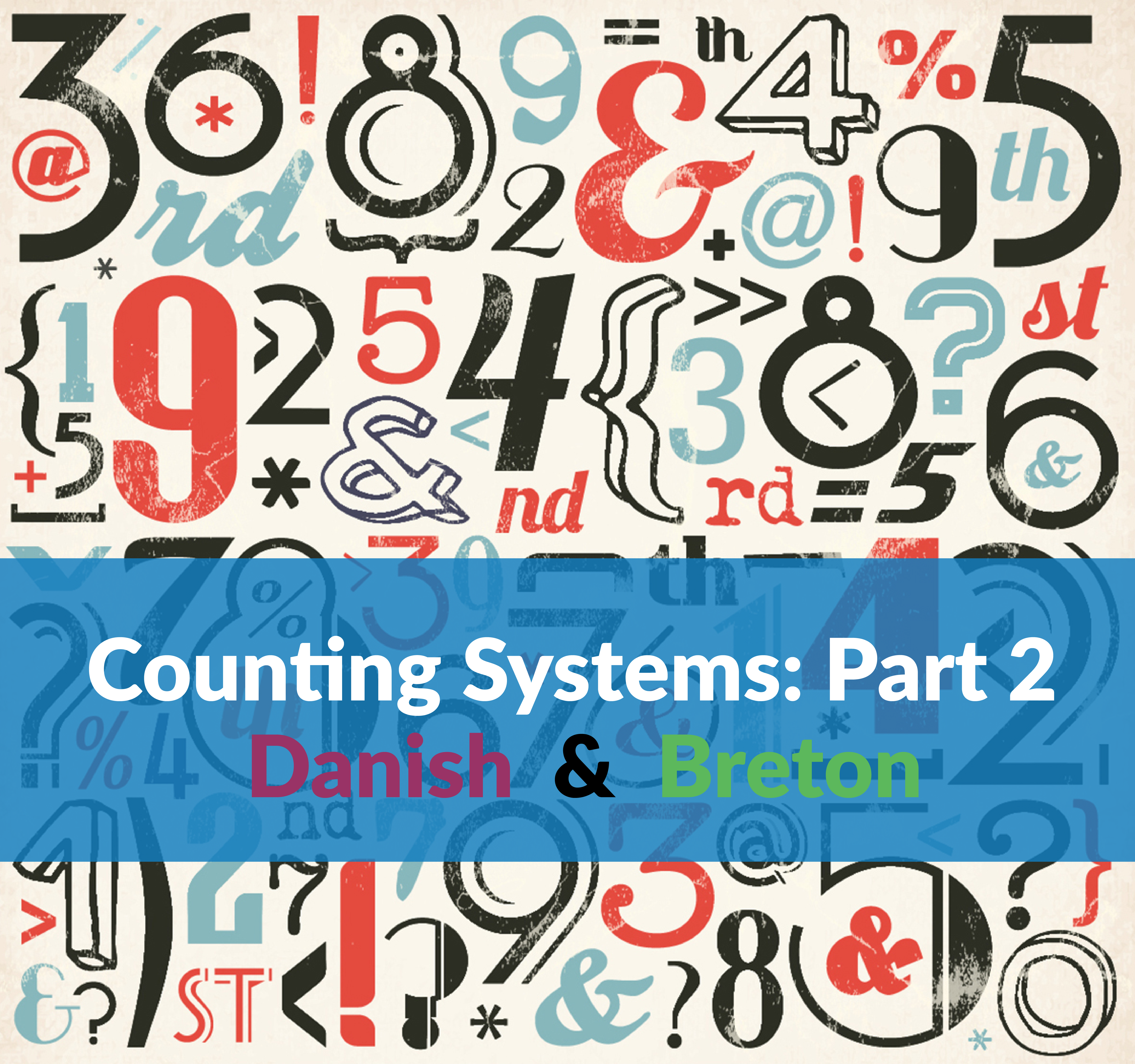It’s already been a while, but last summer I wrote a post regarding interesting ways in which some European languages count. In that very same post I said I was going to make a second part because otherwise it would have been way too long so…here’s part two! 😀
This time we’ll tackle the remaining two languages I had chosen, Danish and Breton.
Image: Designed by Vvstudio – Freepik.com
You might remember from last time that most of the “weird” counting systems in Europe are vigesimal at least in some way, which means that they base their numbers in groups of 20 instead of in groups of 10 like decimal systems do, the so-called “normal” systems, like in English or Spanish.
Once we’ve all jogged our memory, let’s dive right into today’s languages, shall we?
Danish counting system
Image: Wikipedia Commons
Danish has the kind of numerical system which invites you to be overconfident when you first have a look at it. “Oh, this looks fairly easy”, you might think at the beginning. But I warn you, don’t let yourself be fooled by evil Danish! It’s all a wicked lie.
Now, seriously, Danish is a bit like French in the sense that they use a decimal system for most of their numbers (actually, half of them) to suddenly change later.
Numbers from 1 to 49 go like this:
- 12 – tolv – 12
- 23 – treogtyve (tre-og-tyve) – 3 and 20
- 34 – fireogtredive (fire-og-tredive) – 4 and 30
- 45 – femogfyrre (fem-og-fyrre) – 5 and 40
If you’ve ever studied German before, you’ll notice that Danish follows the same order, that is, they say “two-twenty” (2 and 20) and not “twenty-two” (20 and 2) as English does, but aside from that little detail the rest is not hard to understand. Let’s go to the next half then (muahaha).
- 56 – seksoghalvtreds (seks-og-halvtreds) – 6 and (2½ times 20)*
- 67 – syvogtres (syv-og-tres) – 7 and (3 times 20)*
- 78 – otteoghalvfjerds (otte-og-halvfjerds) – 8 and (3½ times 20)*
- 89 – niogfirs (ni-og-firs) – 9 and (4 times 20)*
- 91 – enoghalvfems (en-og-halvfems) – 1 and (4½ times 20)*
The interesting thing about all this is that Danes don’t realize what they’re actually saying because these names you see are abbreviations of the actual forms, and thus they don’t make much sense to anyone. Let me give you an example.
This is the regular way of saying the number 50:
50 – halvtreds – 2½ times 20*
But in reality, the original form is:
50 – halvtredsindstyve – ½ 3rd times 20
halv-tred-sind-s-tyve
lit. half-3rd-times-of-20
Following the same logic, the actual names for numbers 60, 70, 80 and 90 as follows:
- 60 – tresindstyve (tre-sind-s-tyve) – 3 times 20 – (abbr. “tres”)
- 70 – halvfjerdsindstyve (halv-fjerd-sind-s-tyve) – ½ 4th times 20 – (abbr. “halvfjerds”)
- 80 – firsindstyve (fir-sind-s-tyve) – 4 times 20 – (abbr. “firs”)
- 90 – halvfemsindstyve (halv-fem-sind-s-tyve) – ½ 5th times 20 – (abbr. “halvfems”)
Click here for a full 1-100 list of Danish numbers.
Or here for a more in-depth analysis of Danish numbers.
Breton counting system
Image: Wikipedia Commons
Before talking about this counting system, perhaps I should introduce you to the language.
Breton is a Celtic language spoken in Brittany, a region in north-west France. It belongs to the same language family as Irish, Welsh, Scottish Gaelic, Cornish and Manx.
With that in mind, it won’t come to you as a surprise to see that Breton numbers have some similarities with Welsh numbers, which we’ve already covered in the first part of this series. Good news though, this time they’re a bit easier 🙂 .
They are mainly based, again, on a vigesimal system but with a few exceptions. The number 30 has its own form instead of being formed as 10+20 as other vigesimal systems like Basque, 50 is formed as half of 100 instead of 10 + (2 x 20), and the number 18 is thought of as 3 x 6, instead of 8+10. The rest is regular, YAY! 😀
- 13 – trizek – 3 + 10
- 24 – pevar / peder warn ugent – 4 over 20
- 35 – pemp ha tregont – 5 and 30
- 46 – c’hwec’h ha daou-ugent – 6 and (2 × 20)
- 57 – seizh ha hanter kant – 7 and (½ × 100)
- 68 – eizh ha tri-ugent – 8 and (3 × 20)
- 79 – naontek ha tri-ugent – (9 + 10) and (3 × 20)
- 81 – unan ha pevar-ugent – 1 and (4 × 20)
- 92 – daouzek ha pevar-ugent – (2 + 10) and (4 × 20)
Notice that sometimes the word “warn” (over) is used, instead of “ha” (and), just like in Welsh.
Click here for a full 1-100 list of Breton numbers.
That is the end of this “Unusual counting systems in Europe” series, but don’t think though that these are the only languages in the continent with vigesimal systems. The other Celtic languages still have this kind of numerical system, same as Georgian, Albanian and some Slovenian dialects.
Leave a comment below sharing your thoughts on this topic or keep on reading some other posts if you’d like to. See you next time! 🙂
- Unusual counting systems in European languages (Part II) - 9 January, 2017
- Dar las uvas – Spanish sayings #2 - 26 December, 2016
- When translation can be a bad idea - 20 November, 2016
